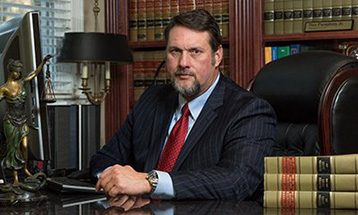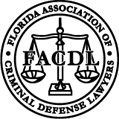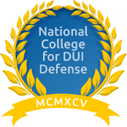- DUI
- Criminal Defense
- Florida DUI
- Traffic Offenses
- Drug Charges
- Marijuana Charges
- Violent Crimes
- Domestic Violence
- Temporary Injunctions
- Weapons Charges
- Theft Crimes
- White Collar Crime
- Juvenile Offenses
- Sex Crimes
- Violation of Probation
- Early Termination of Probation
- Seal or Expunge Criminal Record
- Criminal Appeals
- US Federal Offenses
- Misdemeanor Charges
- Felony Charges
- Co-Defendant Cases
- College Student Defense
- College Student Hearings
- FSU Students
- FAMU Students
- Florida Panhandle Arrests
- Extradition to Florida
- Bench Warrants / Warrants
- Emergency Bond Hearings
- Gambling Charges
- Drone Arrests
- Marsy’s Law
- UAS Infractions
- Introduction of Contraband
- Lying to Police
- Locations
- Case Results
- Our Firm
- Media
- Resources
- Blog
- Contact Us
The Adolescent Brain – What Experts Say on Teens and Crime
March 24, 2022 Don Pumphrey, Jr. Juvenile Offenses Social Share
Before the help of research by experts, sentencing for crimes was determined based solely on the severity of the crime committed. Now with the help of neuroscientists’ and psychologists’ research, the criminal justice system can evolve and change the way adolescents who have committed crimes are perceived and sentenced. For instance, factors that now may be considered in such a case include the juveniles upbringing and home life, their potential substance abuse, the role they played in the offense, and their chance for rehabilitation.
According to Heather Renwick, JD, the legal director for the campaign for the Fair Sentencing of Youth, “We would not have seen this move toward more appropriate sentences for juveniles without the underlying neuroscience research that helped the court understand why youth behave the way they do. The change has been incredibly important because it’s giving hope to people who would have died in prison, and it’s established a new standard going forward.”
So, what exactly are the experts saying? Is it possible to use an expert and their research on the adolescent brain as a defense to a crime? This blog will go over all of the details.
What Experts Say
When it comes to experts, Dr. James Garbarino has been acclaimed as one of the top psychologists with a focus on adolescents. Dr. Garbarino has become somewhat of an ambassador in the criminal justice system. His area of focus has been on violence committed by the youth, and how past trauma has been the root of those offenses. For 25 years he has worked as an expert witness, testifying on behalf of defendants who had committed violent crimes as young children and adolescents.
Researchers such as Dr. Garbarino and other neuroscientist researchers have been able to provide data that shows that the human brain is not fully functioning at full maturity level until the age of 25. This information provides a defense to young adolescents who should not be viewed as an adult in the sentencing process. With the help of Dr. Garbarino, courts have been forced to reconsider how they try adolescents, and show that they are unable to make decisions in the same way that a fully developed adult can.
“Most juvenile killers are best understood as untreated, traumatized children acting out through adolescent bodies,” Garbarino told American Psychological Association (APA). “There is a growing awareness of the role of trauma not just as a consequence of violence, but as a cause.” Further, Garbarino describes that after meeting a large number of convicted killers, they no longer want to be the “monster” they were when the crimes were committed.
Facts on the Adolescent Brain and Crime
Laurence Steinberg is an adolescent brain development expert at Temple University. Steinberg gave a lecture at University of Minnesota called, “Should the Science of Adolescent Brain Development Inform Legal Policy?” In his lecture, Steinberg covered several facts regarding an adolescents’ brain and crime. The following is a list of the facts:
- An adolescents’ brain has weak brakes – Steinberg explains it as a balance between the two opposing brain systems. One seeks out rewards and sensation seeking excitement, whereas the other puts the ‘brakes’ on those impulses. During adolescence, both of these systems are undergoing change, with the reward seeking side more easily aroused and the braking system moving at a very slow pace—often not fully developing until people are well into their 20’s.
- An adolescent tends to take more risks in a group setting – There is a much greater activation of rewards centered in the brain for adolescents when they are around their friends. This means that when teens are surrounded by their friends, they are more likely to engage in risky behaviors.
- The prefrontal cortex covering behavior-governing is still morphing – The prefrontal cortex starts to become a more useful tool through various changes in the brain’s anatomy. The prefrontal cortex also becomes better connected to other parts of the body to help communicate right vs wrong.
- Receiving adult guidance makes a difference – Having an adult provide guidance to adolescents is very important, especially when they are still in the stage of development where their self-control is not yet mature. Parents usually play the role to help protect their children from risky behavior, but any adult can successfully help with this role.
- 90% of children and adolescents who break the law don’t continue to do so as adults – Steinberg claims that, “A lot of the misbehavior that adolescents engage in is transient. It happens during adolescence partly as a function of the immaturity that is characteristic of the period and then it goes away without any intervention whatsoever.”
- It is too often that adolescent offenders are treated the same as adults in the justice system – When adolescents commit a crime, they come into contact with a system that stops viewing them as the children they are. They are not yet adults. Steinberg believes a more separate juvenile justice system needs to emerge to prevent teens from being treated as harshly as adults.
Example Cases
The U.S. Supreme Court Miller v. Alabama held that mandatory life-without-parole sentences for a minor violated the cruel and unusual punishment clause of the Constitution. In the case, Evan Miller was sentenced to life-without-parole when he was only 14 years-old for beating another boy with a baseball bat and then burning him alive inside his trailer.
Miller was transferred to Lawrence County Circuit Court to be tried as an adult, and was convicted in 2006 to a mandatory term of life in prison without the possibility of parole. A motion for new trial was filed by Miller, who claimed that sentencing an adolescent of the young age of 14 without the possibility of parole was in violation of the Eighth Amendment.
Under the U.S. Constitution, the Eighth Amendment prohibits the federal government from imposing unduly harsh penalties on criminal defendants, either as the price for obtaining pretrial release or as punishment for crime after conviction.
After Miller, there could no longer be an automatic life sentence without parole for juveniles. This was included even in the case of homicides. The APA revised the amicus brief used in another case to show that stronger science now proved, “adolescent brains are not yet fully mature in regions and systems related to higher-order executive functions such as impulse control, planning ahead, and risk avoidance.”
In another case, Owens v. Russell, a woman named Jessi Owens was sentenced to life in prison without parole in 1998 in South Dakota. When she was only 17 years-old, Owens and a friend broke into someone’s house to steal money. However, the owner unexpectedly walked in mid robbery, to which Owens reacted by beating him to death with a hammer.
In 2014, forensic psychologist Antoinette Kavanaugh, PhD, was hired by Owens’ lawyer to evaluate her case. This was in light of the Miller v. Alabama case, which proved a life sentence without parole was a violation of the Eighth Amendment. Through Kavanaugh’s reports, she was able to note to the judge in the resentencing about Owens’ past and present behavior.
Owens suffered neglect and abuse as a young child and indulged in drinking and drugs as a teen. During the time of her first sentencing, Owens was not mentally capable of grasping the crime that had taken place, or how it affected the victim’s family and community. Kavanaugh used her research to show that during adolescence, the brain has increased sensitivity to rewards, and that over time given for development, the brain can offer a better understanding of long-term implications of wrong decisions.
After addressing Owens’ past, Kavanaugh was able to highlight how she has changed over the years. Since being incarcerated, Owens has worked multiple jobs, earned her GED, and even helped to take care of a fellow inmate in need. With the help of Kavanaugh’s research, Owens’ life sentence was reduced to 40 years, meaning she was eligible for release in 2018.
Finding a Defense Attorney in Tallahassee, Florida
If you are a minor, or the parent of a minor who has been accused of a crime, you should know that you are not a bad person. Too often the criminal justice system tries to throw adolescents in with adults for the crimes they’ve committed. However, now there is extensive research helping to defend teens who have committed crimes, and helping prevent them from receiving too harsh of a sentence.
Testimony from experts in psychology or neuroscience can play in imperative role in mitigating cases involving juveniles. The first step you should take is to reach out to an experienced juvenile defense attorney who can ensure all relevant experts, such as an expert in the adolescent brain, are used in your case. Don Pumphrey and his team at Pumphrey Law Firm have represented minors across the state of Florida for various charges. Don’t let one mistake ruin the rest of your future. Call (850) 681-7777 or leave an online message to receive a free consultation regarding your case today.
Written by Karissa Key










